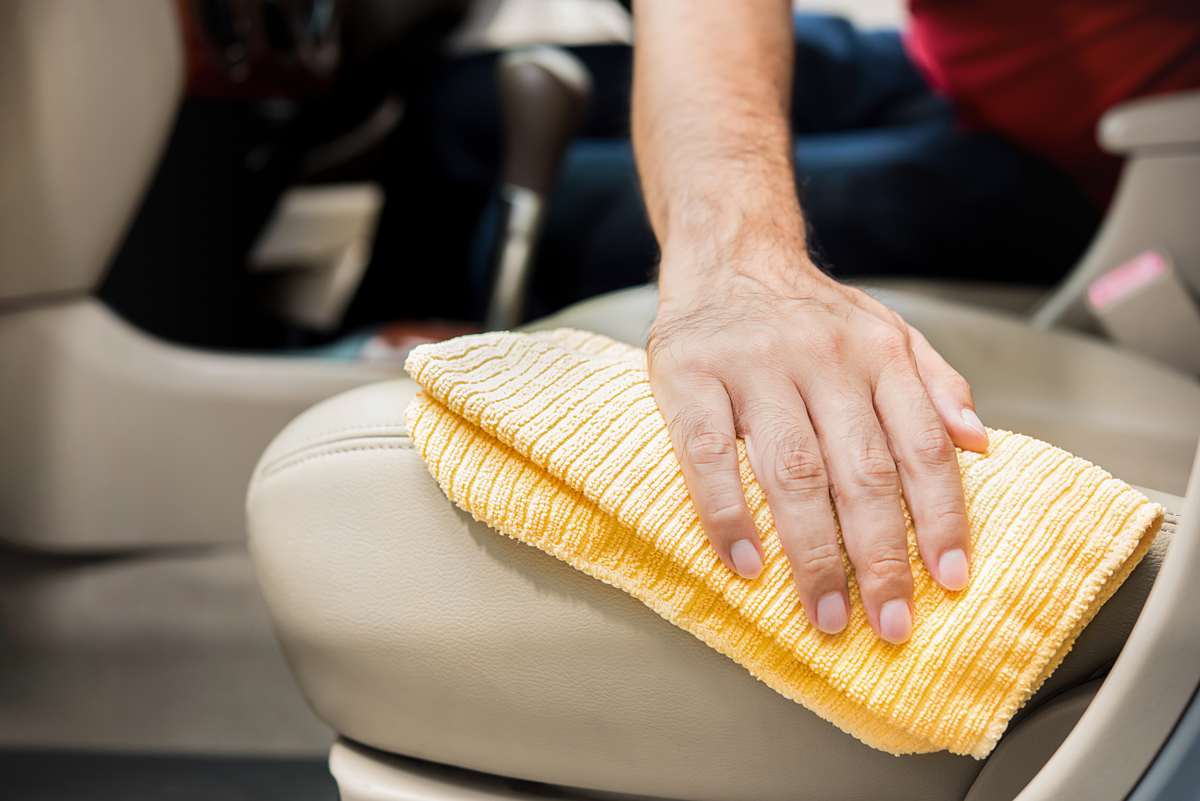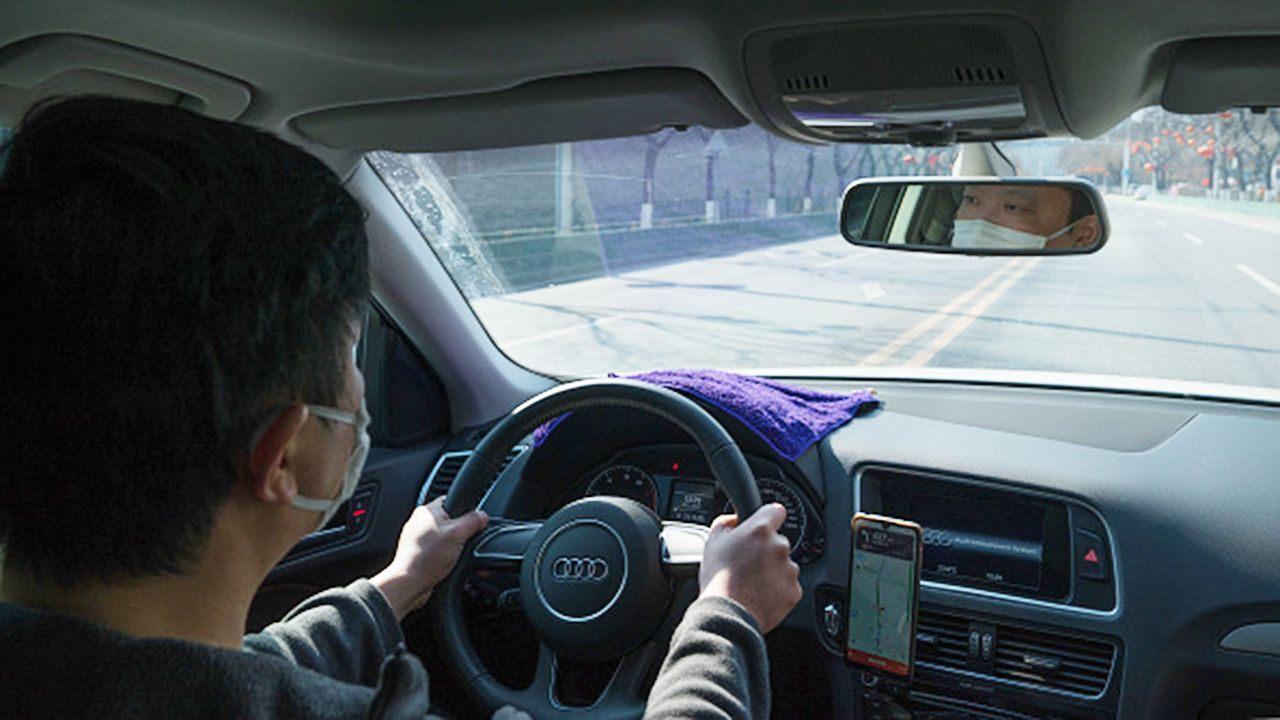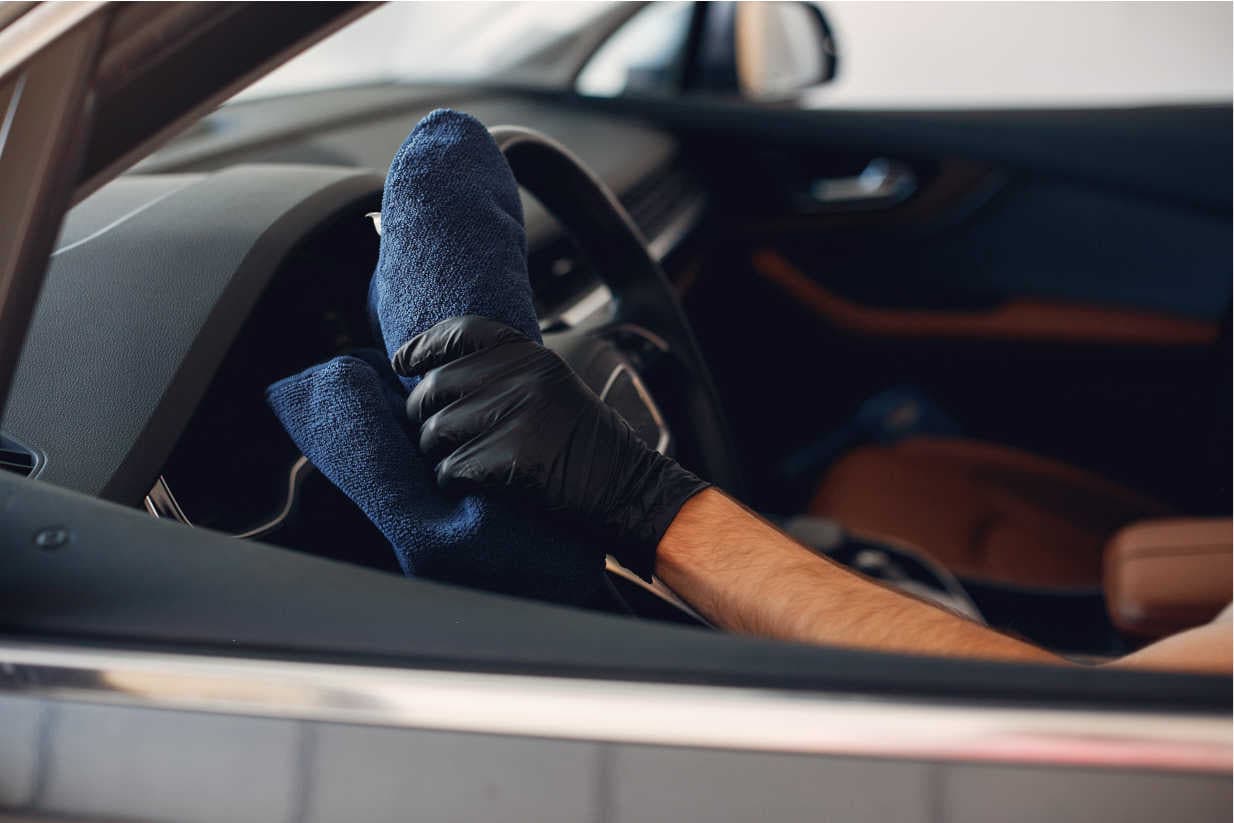Judging by the empty shelves of soap, sanitizer and disinfectant wipes in supermarkets and stores worldwide, it seems everyone knows by now that regular hand washing and house cleaning will lower the risk of getting Coronavirus. And while there’s plenty of information on general hygiene, there’s less specific information on what you should do about a vehicle you’ve rented, a ride-share vehicle you’ve just hopped into, or even how to clean your own vehicle.
Learn how to protect yourself in various driving and commuting situations to minimize the risk of getting and transmitting this rapidly spreading virus.
Contents
The disease can spread from person to person when a person with COVID-19 coughs or exhales, through small droplets from the nose or mouth, and someone nearby breathes in the droplets.
What is notable is that the droplets can land on objects and surfaces around the person, including on the clothes, skin and hair of the people near them. If someone nearby touches these objects or surfaces then touches his or her eyes, nose or mouth, the person will likely be infected.

While you may be already washing your hands every hour or so, it is easy to forget to disinfect high-touch surfaces such as your handbags, keys and wallets, various surfaces in your home like door knobs, and very importantly, your car.
Even if the only persons who have been in your car recently are those you live with, there is a very high chance that you have come into contact with infected surfaces, then later carry the virus into your car. Otherwise, a common scenario is taking public transport, taxis or ride hailing services like Uber or Lyft. In the latter cases, both the drivers and passengers are exposed to high infection risk due to the large number of people that come into contact with the surfaces.
Being in a closed space like a car is problematic. In addition to transmission via droplets and touched surfaces, the virus can spread while sharing airspace with an infected person, or even the airspace after an infected passenger has left. Numerous studies report that the virus can persist in the air for up to three hours. This means you should not underestimate the risk when commuting by public transportation or taxis and ride hailing and sharing.
Many studies suggest that in general, the Coronavirus can survive two to four days on various surfaces. Therefore, if someone sneezes on you, or you are taking a taxi, it is best to wash your clothes with hot water and take a shower right after you get home to get rid of any potential viruses on your hair, clothes and personal belongings.
While it has been suggested that Coronavirus can survive for up to four days on non-porous surfaces, one study on a related coronavirus that causes SARS proves that the situation can be much worse. A study published in The Journal of Hospital Infection found that the virus can survive on “inanimate surfaces like metal, glass or plastic for up to nine days.” The problem with cars is that their interiors normally contain many different kinds of surfaces, from leather and metal to rubber and plastic.
Car Rentals, Ride-Sharing and Taxis
Various organizations, including KidsAndCars.org, recommend avoiding ride-hailing services like Uber and Lyft completely if possible. If not, passengers should try to refrain from touching surfaces and avoid touching their faces, in addition to washing their hands and ideally taking a shower after getting home.
Drivers and passengers both should carry hand sanitizer for frequent use. Portable disinfectant wipes are handy as well, given that you still somehow manage to buy them. In a situation where riders are consistently getting in and out of shared vehicles, it is better to be thorough, even extreme in your safety practices.

If you have to be in a car with other people, pay attention to these safety practices for the protection of the drivers and other passengers as well as yours. Avoid physical contact with other occupants such as shaking hands, practice social distancing with a minimum distance of two feet, and if you have to sneeze or cough do it into a tissue or into your arm behind the elbow and away from anyone else.
If you’re catching a taxi or ridesharing service, sit in the back seat where possible for better separation from the driver. Services that use an app for payment are ideal in these times as it requires no physical interaction between driver and passenger. Remember, the virus can survive on money and credit cards for up to nine days.
If you have to touch an EFTPOS machine or cash, use hand sanitiser when you get out of the car and wash your hands thoroughly as soon as possible. It is vital to avoid touching your face directly after you get inside the car and before you have the opportunity to sanitize your hands.
Last but not least, don’t drive if you’re feeling sick and avoid driving or sharing a ride with anyone who is showing coronavirus symptoms.
Realizing the danger that the nature of their business poses, Uber and Lyft said they will temporarily suspend the accounts of both drivers and riders if the companies are notified that those users are feeling sick. Both companies are providing drivers with disinfectant, though supplies are limited.
Public Transportation
To minimize the risk of infection, if you have to ride public transportation such as buses and trains, remember to practice social distancing and bring sanitizer with you. Many transportation agencies pledged to install additional sanitizing stations and encouraged riders to remain at least 3-6 feet away from one another.

Wipe down areas beforehand that you will immediately come into contact with, such as rails, grab handles and seats. These are high-touch points with surprisingly heavy accumulation of germs and viruses. This is a recommended procedure on long flights, and it may be helpful for public transit as well. If this is too much trouble, just be sure to keep your hands away from your face, use hand sanitizer, and wash your hands at the earliest opportunity.
Children and the Elderly in Vehicles
People over the age of 60 and those with underlying conditions such as hypertension, diabetes, cardiovascular disease, chronic respiratory disease and cancer have the highest risk of severe disease and death from COVID-19, according to WHO.
Early studies from WHO have shown that the disease is rare and mild in children. However, kids are often unsuspecting carriers of infection, due to their lack of awareness of personal hygiene. They are more likely to spread it to parents and relatives than become sick themselves.
This is also an important reminder to young, healthy people who are underestimating the danger of the Coronavirus. If you are young and eat and exercise well, you might be strong enough to fight against the virus after infecting it. However, by not practicing social distancing and personal hygiene, you are likely spreading it to the ones you love and tens to hundreds of others that come into contact with you.
Regarding children and the elderly, one common scenario that could cause concern is when a driver who regularly drives children to and from school and may also have elderly people as passengers. Without proper cleaning, the virus can spread from the children to the elderly passengers, even if they are not riding in the vehicle at the same time.
It is recommended that seniors over 60 and those with underlying health conditions should take extra precaution by wiping down high-touch areas like car doors, seat belts and window buttons.
How To Sanitize Your Car
While everyone should cut down on unnecessary trips like to the movies or bars, even one trip to buy groceries might pose certain risks if you do not disinfect the interior of your car properly.
After going out for groceries, you should wash your hand then clean frequently touched surfaces in your car, including the steering wheel, door handles, shift lever, any buttons or touch screens, wiper and turn signal stalks, passenger and driver door armrests, grab handles, and seat adjusters.

Since the interior of most cars is made up of a number of different materials, it’s important to use the right products, and techniques, to disinfect your vehicle properly. And the important thing is to wash your hands properly before you proceed with the cleaning. There is no point in disinfecting your car interior just to touch the surfaces right afterwards with your hands, which might be carrying the virus.
Focus on disinfecting these most frequently touched hot spots: your steering wheel, door handles inside and out, your car’s shifter, all window and control buttons, wiper and turn signal stalks, door armrests, any grab handles, and seat adjusters. Your steering wheel needs extra attention due to the material and all the wrinkles plus nooks and crannies that can be the ideal home for the virus and germs.
READ MORE
- DIY Car Interior Cleaner Guide – Make Your Vehicle Sleek And Shine
- Absolutely Best Car Wash Soaps In 2020
- The Dos And Don’ts Of Car Pressure Washing
What To Use
Regular soap
The good news is normal soap is proven to kill the virus as soap can destroy the protective envelope surrounding the virus. The effective cleaning solutions don’t even need to be antibacterial so you don’t need to use any harsh chemicals or bleaches that could be harmful to yourself and the environment and also damage your interior. Hand soap, body soap or dishwashing soap with water is sufficient.
Rubbing Alcohol
Disinfectant wipes with at least 70 percent alcohol content are a convenient option while on the move. Another substitute is to use at least 70-percent rubbing alcohol or isopropyl alcohol to wipe down surfaces and sanitize your hand.
The great news is most car leathers and imitation leathers have urethane coatings for protection, which is safe to clean with alcohol. While using alcohol to disinfect your car interior during the outbreak is simple and cheap, doing so regularly in the long term is not recommended. This is because most leathers are dyed, so over time, alcohol will cause discoloration and premature damage.

If that is not enough to keep you assured, you should check the label of cleaning solutions. Anything with one or more of the following active ingredients should be effective to tackle the Coronavirus, according to the United States Centers for Disease Control (CDC):
- Quaternary Ammonium
- Sodium Carbonate Peroxyhdrate
- Sodium Hypochlorite
- Hydrogen Peroxide
- Isopropanol
- Octanoic Acid
- Peroxyacetic Acid
For Fabric and Leather
For soft surfaces such as seat cushions, armrests, carpet and headliner, use a cleaner that’s appropriate for the material such as carpet or upholstery shampoo or leather cleaner.
What to Avoid
The general rule is not to use bleach or hydrogen peroxide on the interior surfaces of your car. While they can both kill coronaviruses on surfaces, they will cause discolouration and damage your car’s upholstery.
Another cleaning solution to avoid is using ammonia-based cleaners on car touch screens, as they can damage their anti-glare and anti-fingerprint coatings.
READ MORE
- How To Clean Car Windows Without Streaks
- Best Ways To Clean Bugs Off Windshield
- How To Clean Alloy Wheels
Tips for Sanitizing Your Car
- Wear gloves when cleaning.
- Wash your hands thoroughly before and after the cleaning.
- Clean all surfaces with a microfiber cloth, regardless of the kind of cleaning solutions you opt for. Microfiber cloth sweeps away dirt and dust particles before they can scratch surfaces.
- Start with the high-touch points like exterior and interior door handles, steering wheel, light and wiper stalks, seat-belt buckles, and gear-shifters.
- Clean all surfaces such as the dashboard, backs of seats, windows and door cards particularly those that would be in the line of fire for anyone coughing or sneezing.
- Don’t forget the infotainment touchscreen, and buttons and switches. Just avoid any water getting into the electrics and do not use ammonia-based cleaners on touch screens.
- This is commonly overlooked: Child restraints should be cleaned thoroughly, as should any toys or books you keep in the car to keep them entertained as well as other loose items like USB cables.
- Have a rubbish bag handy for tissues or any disposable items.


